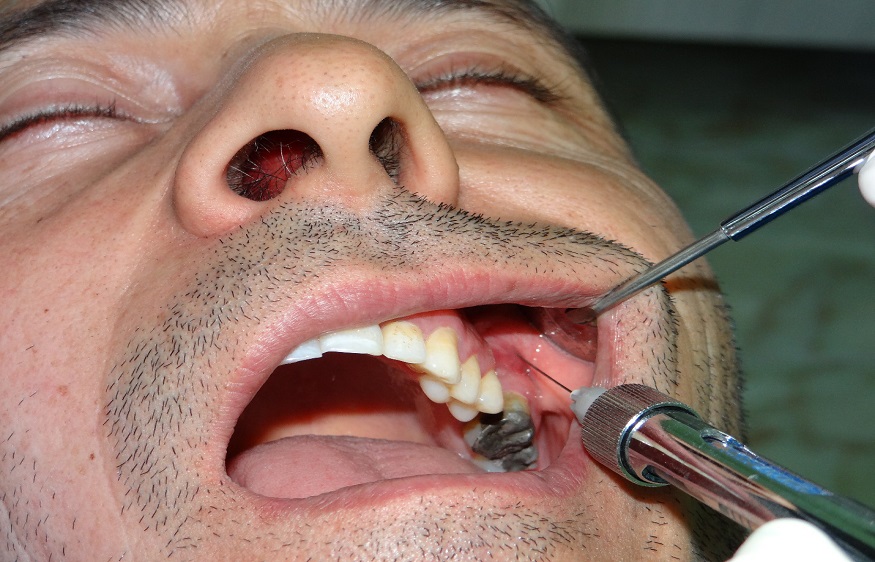What Kinds Of Anaesthesia Are There, And How Are They Different?
4 min read
Local anaesthesia
In this type of anaesthesia, only a tiny part of the body is acted upon, applying an anaesthetic drug to avoid pain. It can be topical anaesthesia if the medication is used in drops (eyes), spray (throat) or paste (skin), or anaesthesia infiltrations if it is injected with a syringe and needle in the area to be operated on. It is usually applied by the surgeons themselves.
The duration of the effect of a local anaesthetic will depend on the type of anaesthetic (bupivacaine lasts longer than lidocaine), the total dose (a higher dose acts earlier and the effect lasts longer), and whether or not adrenaline is added, a vasoconstrictor that makes it take longer to eliminate the drug and is usually associated with local anaesthetics seeking this effect. A local anaesthetic usually lasts between half an hour and two hours, depending on the factors mentioned.
regional anaesthesia
As its name suggests, it affects a specific region, usually an arm, a leg, or the lower half of the body.
Depending on the area to be treated, different techniques can be used.
If the intervention is on any area of the upper limb (shoulder, elbow, hand, etc.) or lower limb (hip, knee, foot, etc.), trunk anaesthesia can be performed if it is of a single nerve or a plexus, if several nerves are involved. The anaesthetic is injected into the area of the nerve/nerves that control sensation in that region. It is more common in the upper limb.
Another more widely used regional technique consists of puncturing the back and injecting the anaesthetic near the spinal column, where the nerves will enter the spinal cord to carry pain sensations to the brain, thus blocking the transmission and preventing the sensation of pain. Within this modality, in turn, there are two variants:
Spinal or intrathecal anaesthesia. The needle passes through the dura mater, the spinal cord’s protective covering (which carries pain sensations to the brain), and the anaesthetic is injected into the space where cerebrospinal fluid (CSF) circulates, which bathes and protects the spinal cord.
Epidural anaesthesia. The needle does not pass through the dura mater, and the anaesthetic remains in the area where the nerves enter the spinal cord, outside the dura mater. A catheter is usually placed that allows continuous administration of the drug (delivery and postoperative pain control)
In all loco-regional modalities, the patient is awake and can collaborate if necessary.
General anaesthesia
General anaesthesia involves the temporary loss of feeling throughout the body, accompanied by loss of consciousness, which often worries patients. It is necessary for complex interventions. Knowing what we are facing will help us to be calmer, so below, we will talk about the different phases of general anaesthesia.
- Induction. The anesthesiologist administers the drugs to achieve hypnosis, analgesia, amnesia and relaxation (if necessary). In general anaesthesia, consciousness is completely lost, it is what is called hypnosis, and it is like being in a coma induced by the administered drugs. Hypnosis does not mean being insensitive; to avoid pain, the anesthesiologist administers an analgesic, usually a morphine derivative.
Regarding relaxation, muscle relaxants are usually applied when the surgery requires the patient’s muscles to be relaxed. A tube will be placed inside the trachea to ensure the patient’s ventilation.
The anesthesiologist monitors the patient to control vital signs and that oxygenation, body temperature, ventilation, etc., are adequate throughout the process. To do this, she places different sensors that connect to the monitors that analyse the signals that come from the patient.
Once the induction phase is over, the maintenance phase begins.
- Maintenance. The necessary drugs continue to be administered so that the intervention can be carried out safely. This administration can be done by the intravenous route, TIVA anaesthesia (Total Intra Venous Anesthesia) or by inhalation in which the drugs are applied through the machine with which the patient is being ventilated. The combination of both is called Balanced Anesthesia.
- Wake up When the intervention ends, the anesthesiologist must wake the patient. To do this, he cuts off the supply of drugs by inhalation and administers, if necessary, antagonists of the medicines that he had used so that they stop having an effect.
When the patient recovers the appropriate level of consciousness, the devices placed to control ventilation are removed. He is transferred to the Resuscitation Unit, where he will be monitored until his functions are fully recovered.
Nowadays, the combination of General and Loco-regional Anesthesia is frequent because more and more general anaesthesia is complemented with a loco-regional catheter for postoperative pain control, and regional anaesthesia is usually accompanied by sedation so that the patient is tired. And calm during the procedure.




